Baked vegan cabbage rolls (gołąbki)
Baked vegan cabbage rolls (gołąbki)
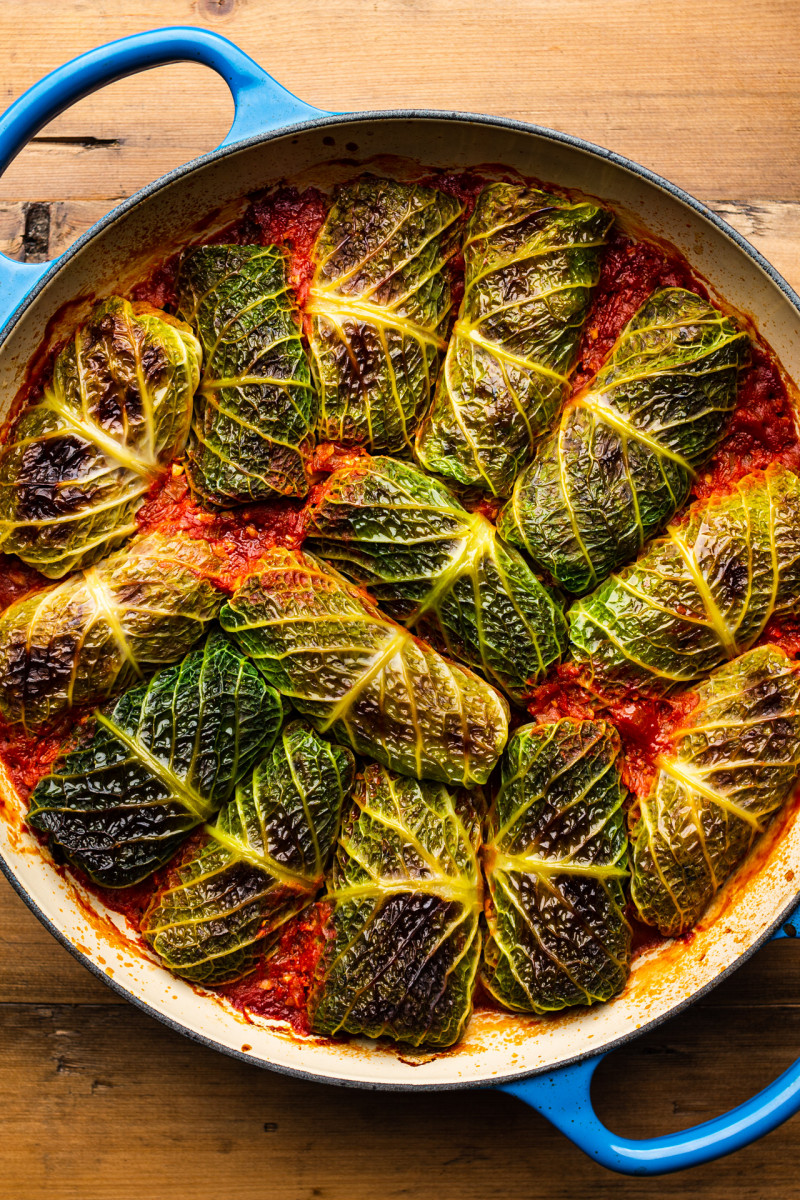
I apologise for a massive omission on my part – as my mum has kindly pointed out the blog was missing a Polish inspired cabbage rolls recipe UNTIL TODAY. Don’t get me wrong, I am a massive fun of stuffed cabbage rolls, any stuffed vegetables actually, and I have published a number of recipes in that vein already, like my Asian-inspired cabbage rolls, Greek dolmadakia, also Greek gemista (yemista), but I was admittedly dragging my feet on ‘gołabki’, which is what they are known as in my native language.
The main thing that was stopping me was that I wasn’t sure I will be able to convey to you how delicious they can be through the medium of photography alone. While they can taste delicious, they don’t tend to look the prettiest. Traditional stuffed cabbage leaves are most often made with a bog standard white cabbage, but I really love the texture and colour of Savoy cabbage so that’s what I used to make sure they are a little less anaemic to look at.
The most commonly made filling is rice flavoured with minced meat, but the Christmas Eve version (which traditionally cannot contain meat) is made with dry porcini mushrooms. My version is very shroomy as I love mushrooms and they bring so much flavour to otherwise bland rice. I used a mixture of aromatic dried mushrooms and fresh mushrooms, some walnuts for texture, lots of herbs, a touch of soy sauce and balsamic vinegar for even more umami and I am really happy with how they turned out. They don’t look too shabby either, I roasted the tops of the parcels under a hot grill at the end for a touch of rusticity.
In case you want to try this recipe out, but you would like to tweak it a little, here are a few pointers that may be helpful.
MUSHROOMS: they are pretty key here as they contribute so much flavour, but I know that I will get asked what can be used instead. I have made a version of these with sun-dried tomatoes and it was just as delicious, the flavour profile was different of course but still lovely. Sun-dried tomatoes and crumbled smoked tofu (or soy mince) soaked in flavoursome stock would be my suggestion.
RICE: This recipe also works with white basmati rice although I would shorten the pre-cook in porcini stock to only about 8 minutes. If you wish to use brown rice, I recommend precooking it until it’s almost done and skipping the rice simmering step, you’ll also need to make a stronger (240 ml / 1 cup) porcini stock and add together with wine (step 5). Traditionally cooked rice is used instead of raw, but my method makes the recipe less fussy.
WALNUTS: They aren’t traditional but I like the little pops of texture they add. If you are not keen sub them with cooked lentils or beans (smashed up a little).
HERBS: I used thyme, but rosemary, oregano, sage and parsley would also work beautifully.
SOY SAUCE / TAMARI: It adds saltiness and depth of flavour. You could use red (ideally) miso instead or perhaps salt and some nutritional yeast, just go by your palate.
TOMATO SAUCE: You could simply stew the rolls in well seasoned veggie stock (240-480 ml / 1-2 cups) enriched with a tablespoon or so of olive oil, some tomato paste / concentrate and some smashed garlic.
PORTION SIZE: You can easily make half of the portion, just make sure that your baking dish is small enough that it holds all of the rolls in snuggly.
EXTRA PLANT PROTEIN: You could swap some of the rice for precooked firm lentils (like Puy) or mashed up beans (like Cannellini or Borlotti), it will make the dish more protein rich.
I hope I anticipated all the questions you may possibly have and that you will make this dish. It may sound daunting, but it really isn’t that technical, plus there are shortcuts you can take (like skip the sauce) and it’s a big portion so it feeds a crowd!
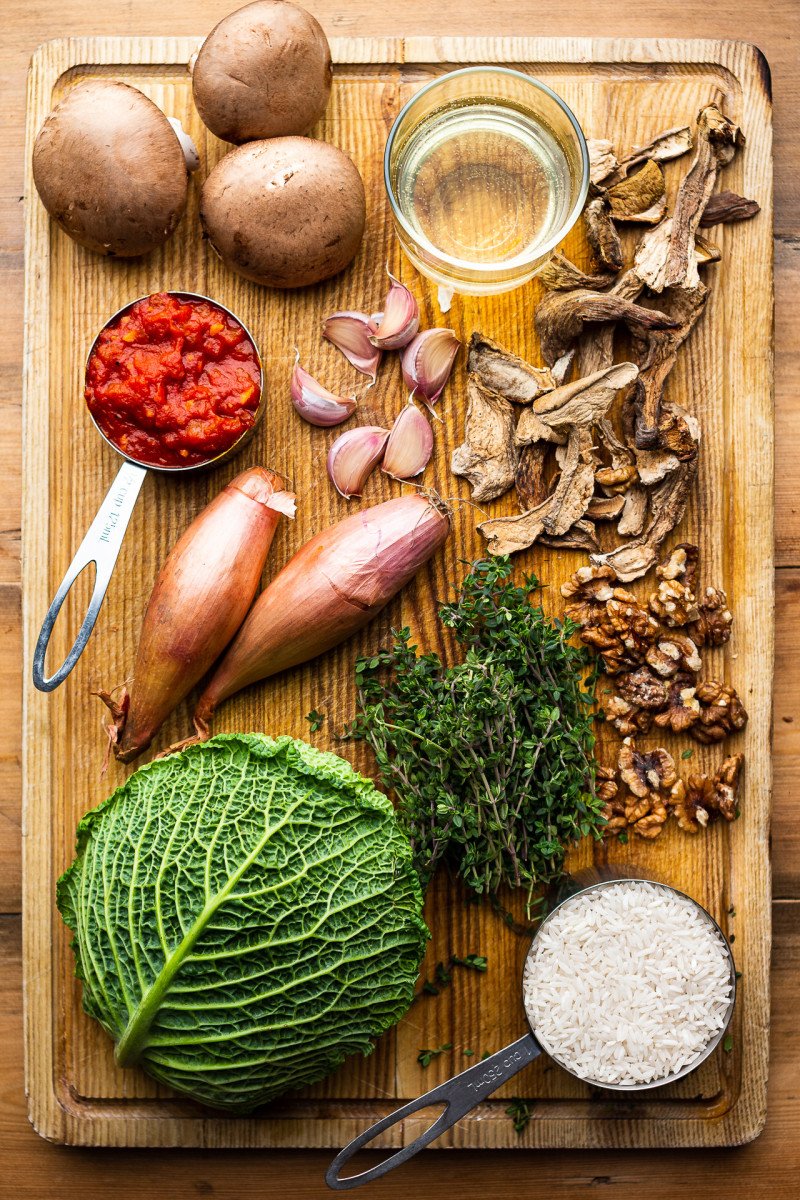
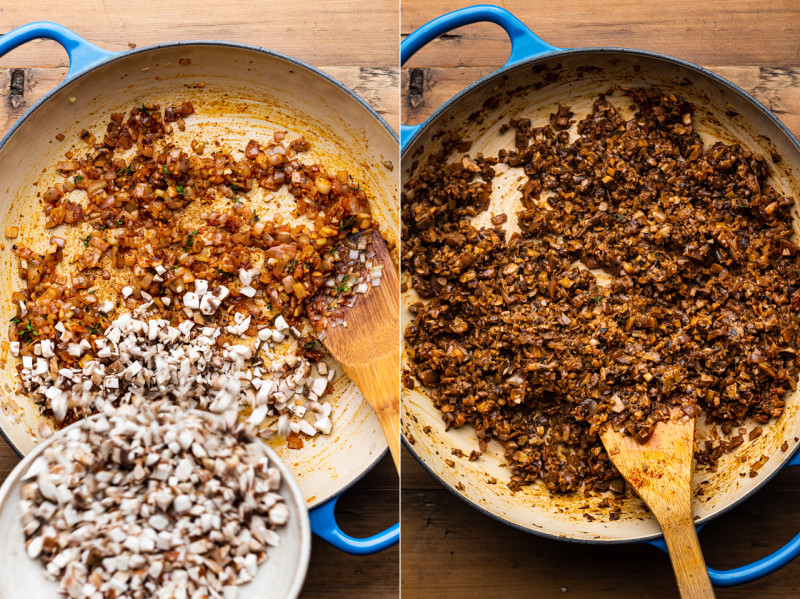
Make the filling by sautéing onion and garlic first, then add in chopped mushrooms in two batches. Cook the mushrooms through and until all of the liquids have evaporated.
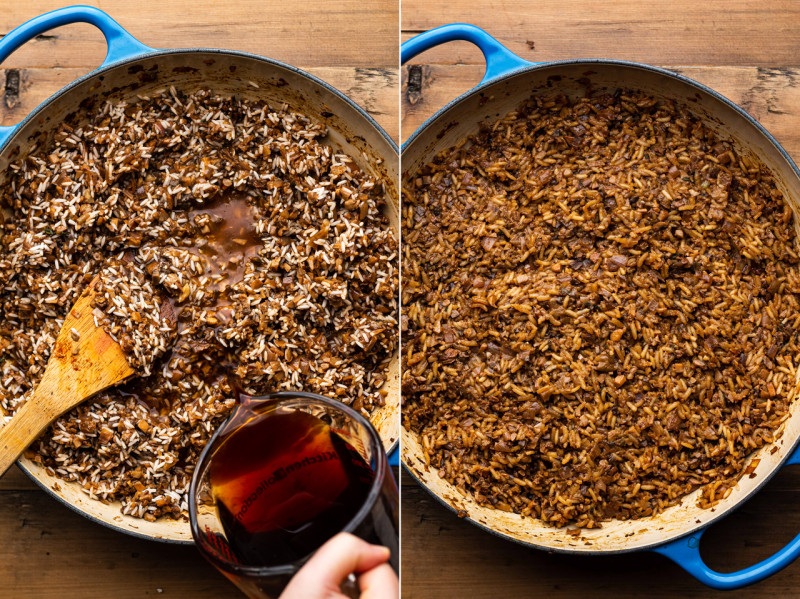
Next, stir in raw rice and porcini stock. Cook briefly to soften the rice a little before it finishes off in the oven.
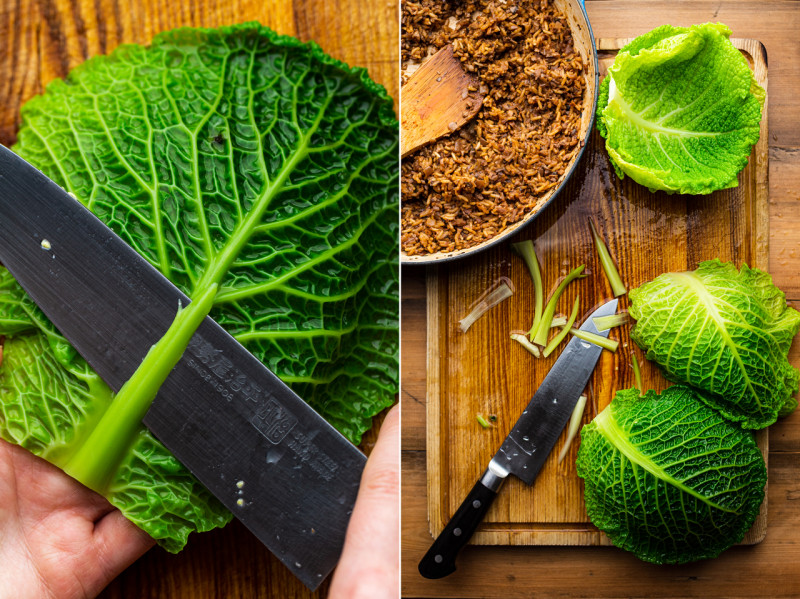
Prepare blanched cabbage leaves for stuffing. Using a sharp knife thin the stem so that the leaves are more pliable when filling and more pleasant to eat.
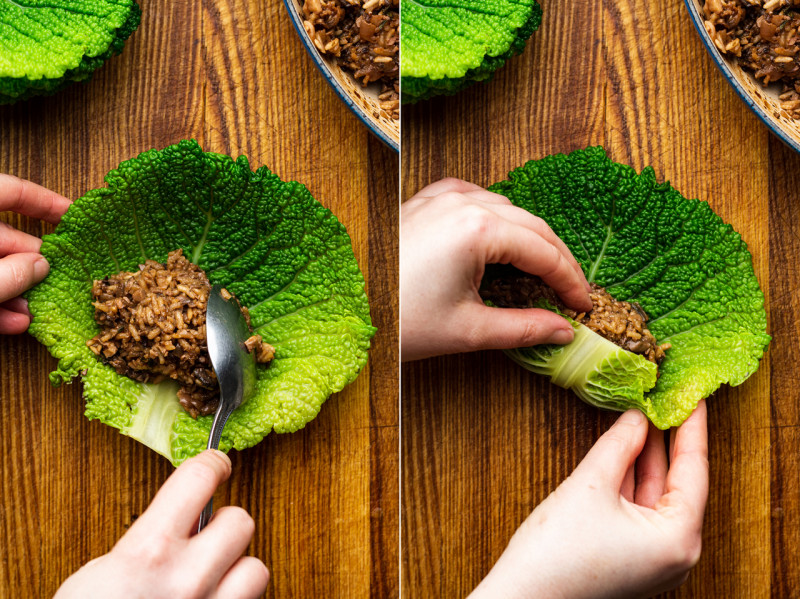
Fill the leaves with cooled down filling, rolling them tightly, like a burrito.
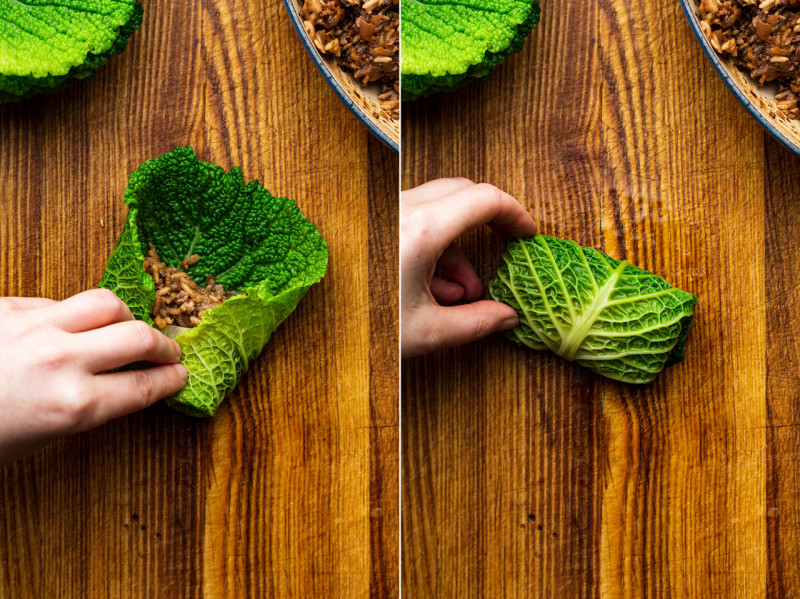
Arrange filled cabbage leaves, steam down, on a bed of thinned tomato sauce, cover the dish and bake. Then take off the lid and bake a little bit more so that the sauce reduces and the cabbage tops brown a little.
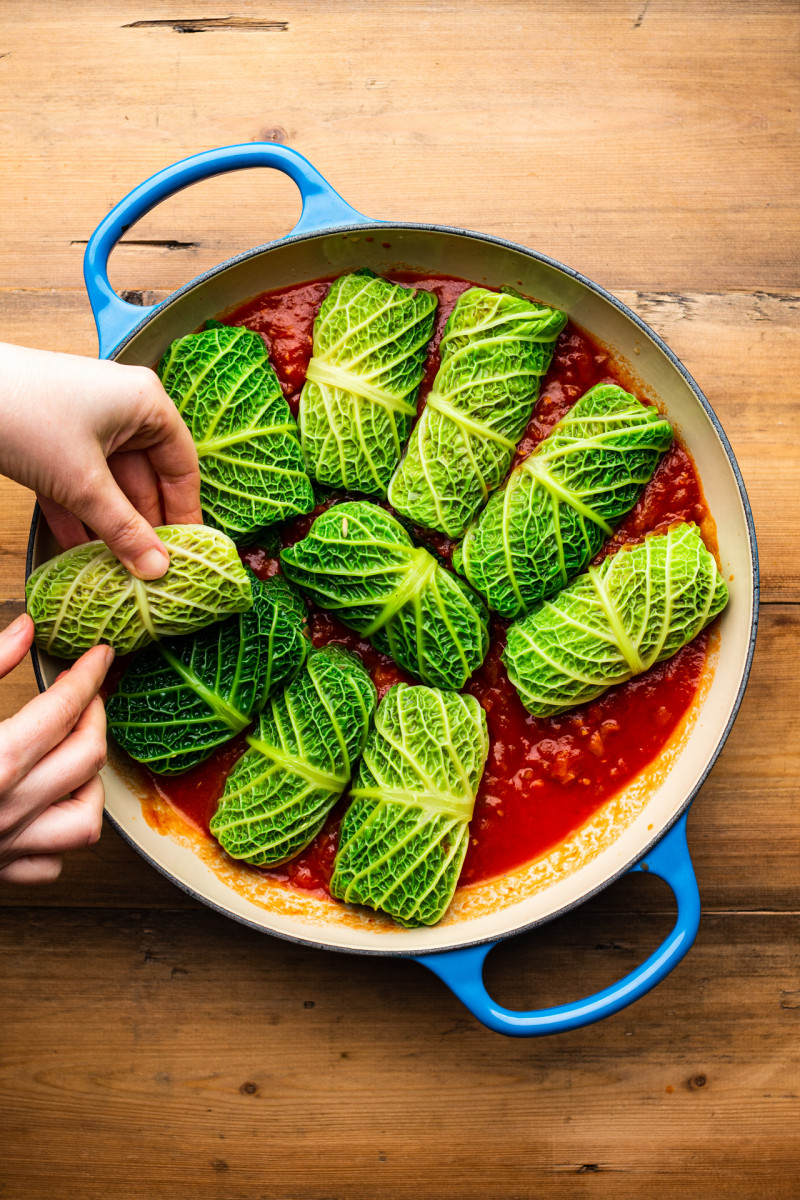
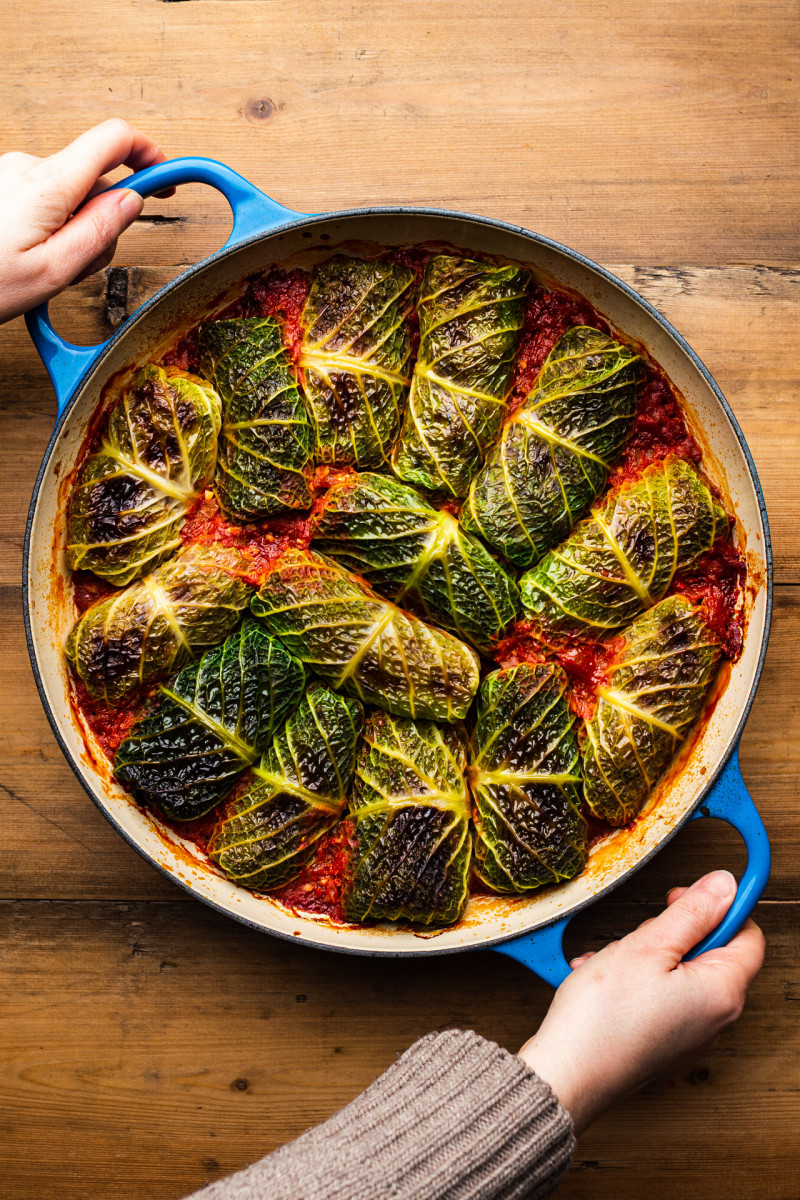
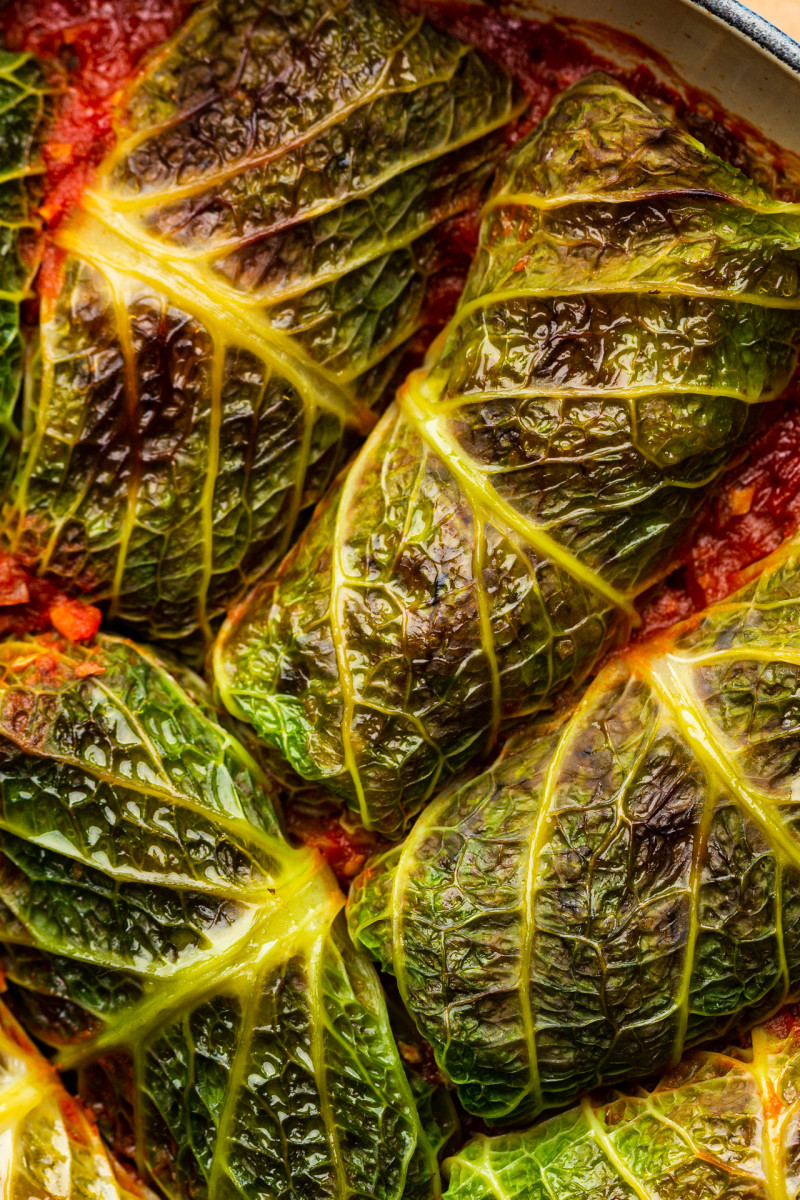
- 15 g / ½ oz dried porcini, soaked overnight (ideally)
- 250 g / 8¾ oz mushrooms (I used cremini / chestnut mushrooms)
- 30 ml / 2 tbsp olive oil
- 2 banana shallots (or 1 medium onion), very finely diced
- 6 garlic cloves, finely diced
- 1 heaped tsp smoked paprika
- ½ tsp sea salt, adjust to taste
- pepper, to taste
- fresh thyme, leaves from about 10 sprigs, to taste
- 120 ml / ½ cup white wine (or veggie stock)
- 50 g / ½ cup walnuts, chopped coarsely
- 10 ml / 2 tsp quality balsamic vinegar, adjust to taste
- 20 ml / 4 tsp soy sauce / tamari (GF), adjust to taste
- 200 g / 1 heaped cup (raw) long grain rice*
- 14 medium-large Savoy cabbage leaves*
- 500 ml / 2 cups tomato sauce, ready-made or see below
SIMPLE TOMATO SAUCE* (optional)
- 30 ml / 2 tbsp olive oil
- 1 medium onion, finely diced
- 4 garlic cloves, finely diced
- 2 x 400 g / 14 oz canned tomatoes (I like plum tomatoes)
- 15 ml / 1 tbsp tomato paste / tomato concentrate
- salt and pepper, to taste
- a good pinch of chilli (optional)
- 1 tsp sugar (optional)
- Soak porcini mushrooms in 400 ml / scant 1¾ cups of boiling water to soften them and to obtain a mushroom infused stock. I recommend 8 hours at least, 24 hours is even better. If making your own tomato sauce, get it going first (recipe below) and then return to the rolls while it simmers.
- Chop fresh mushrooms into a small dice. If using a food processor, slice thickly first and use the pulse method. Pulse mushrooms in smaller batches and be very careful not to overprocess, you want coarse dice, not mush.
- Heat up oil in a large pan you have a lid for. Add diced shallots, fry them off on a low-medium heat until soft and translucent (about 10 minutes). Next add in garlic – fry for a few minutes stirring frequently as it burns easily.
- Stir in smoked paprika, a good pinch of salt and pepper and thyme leaves. Stir all the ingredients around for a few seconds on low heat, next add half of the chopped mushrooms. If the water released from the mushrooms does not deglaze the pan, add a splash of wine.
- Once the first portion of the mushrooms cooks down a little, add the second. Allow it to cook down completely, before adding the rest of the wine, finely chopped porcini (make sure you rinse the grit off first and keep the stock), walnuts, balsamic and soy sauce. Carry on cooking the mushroom mixture until all the excess liquid evaporates. Taste and adjust the seasoning being mindful that rice will dilute the intensity.
- Next, add in rinsed rice and all of the mushroom stock without the grit that tends to settle at the bottom. Cover the pot and bring the mixture to a gentle simmer, once it starts to simmer count about 10 minutes, then switch off the heat and keep the lid on the pan for a further 5 minutes. Taste and adjust the seasoning if needed.
- Remove the leaves of the cabbage by making a delicate incision at the bottom of each leaf (where it attaches to the head), prising the leaf off gently. You will need about 14 whole leaves in total. I used large and medium leaves from 2 cabbage heads and kept the rest for a stir-fry or soup.
- Bring a big pot of water to the boil and grab a large bowl, fill it with cold water (ice cubes help but are not necessary).
- Plunge 4-5 leaves at a time into the boiling water. Blanch them, submerged fully (a smaller lid is often used to weigh them down), for 3-4 minutes. Fish them out and plunge them into the cold water.
- Thin the outside stem of each leaf with a sharp knife (see photos). Run the knife along the stem trimming off any excess that jets out above the leaf’s surface.
- Set the oven to 200° C / 390° F and grab a large oven proof dish / saucepan, ideally with a fitting lid but you can also use a piece of kitchen foil.
- Pour 480 ml / 2 cups of tomato sauce and 240 ml / 1 cup of water to the bottom of the dish. Mix the two together.
- Place a trimmed cabbage leaf on the work bench so that the inside faces you. Place a tablespoon or two (depending on the size of the leaf) of the filling at the bottom of each leaf, fold the sides to the middle and then roll the leaf gently until the filling is safely enclosed inside. Place it snugly in the prepared baking dish, with the seam down. Continue with the remaining leaves in the same manner.
- Cover the pot with a lid and bake for about 20 minutes.
- Remove the lid and bake for a further 20 minutes, until the sauce has thickened and the cabbage leaves are fully cooked through (a sharp knife should slide right through the thickest part of the leaf). If you want the cabbage leaves charred, switch the oven to the grill function for the last 10 minutes (or so) and brush the leaves lightly with olive oil – watch carefully as they can burn quickly.
SIMPLE TOMATO SAUCE
- Heat up oil in a pan, once hot add diced onion and fry off on a low-medium heat until soft and translucent (about 10 minutes). Next add in garlic – fry for a few minutes stirring frequently as it burns easily.
- Add canned tomatoes. If using plum tomatoes, add one can at a time, squashing the whole tomatoes with a wooden spoon. Add tomato paste, a good pinch of salt, pepper and chilli (if using), plus a can’s worth (about 500 ml / 2 cups) of water to the pan. Stir everything well and allow it to simmer gently for about 20 minutes.
- Give everything a good stir every 20 minutes (I find that the sauce take about 60 minutes of simmering time) and squash down any stubborn tomato pieces you see. As soon as the pan is starting to look dry but the tomatoes are still quite chunky, add more water (I add about 1 litre / 4 cups in total).
- Once the sauce is thick, more or less uniform (i.e all the tomatoes have broken down nicely), taste and adjust the seasoning, including adding a small amount of sugar if you find it too acidic.
*RICE: This recipe also works with basmati rice. If you wish to use brown rice, I recommend precooking it until it’s almost done and skipping the rice simmering step, you’ll also need to make a stronger (240 ml / 1 cup) porcini stock and add together with wine (step 5).
*CABBAGE: You may need 2-3 cabbages as ideally you want large and medium leaves only. Keep the rest for a stir-fry or soup.
*TOMATO SAUCE: You could simply stew them in well seasoned veggie stock (250-500 ml / 1-2 cups) enriched with a tablespoon or so of olive oil, some tomato paste / concentrate and some smashed garlic.

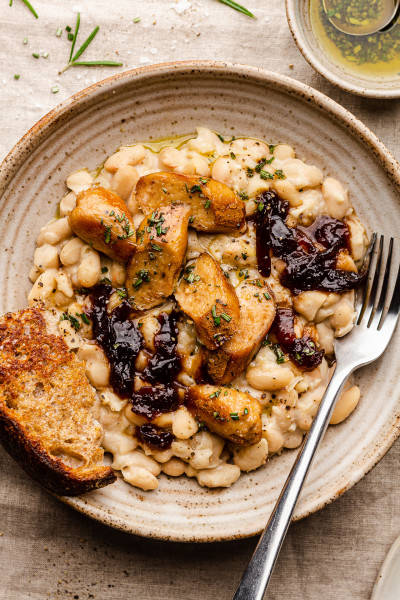
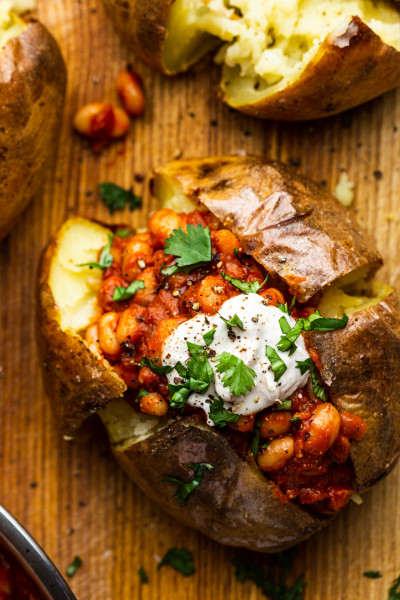

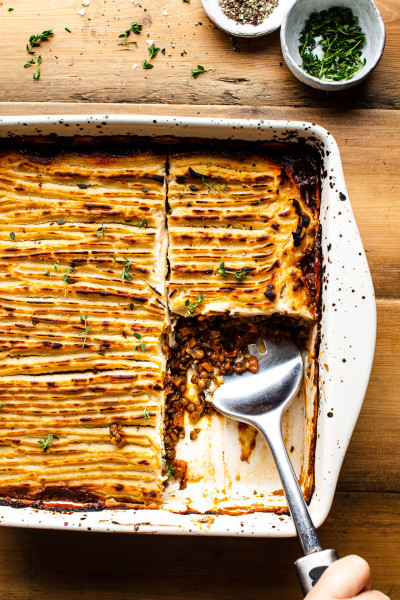
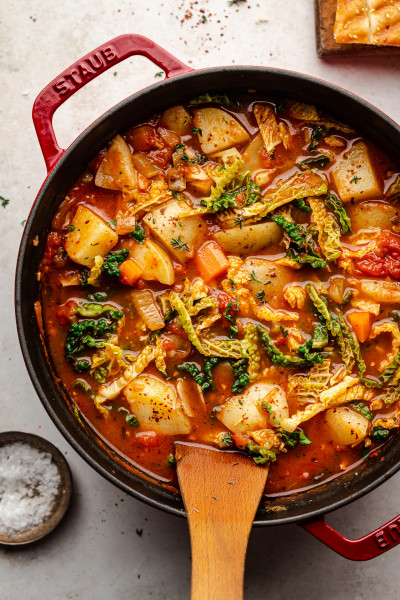
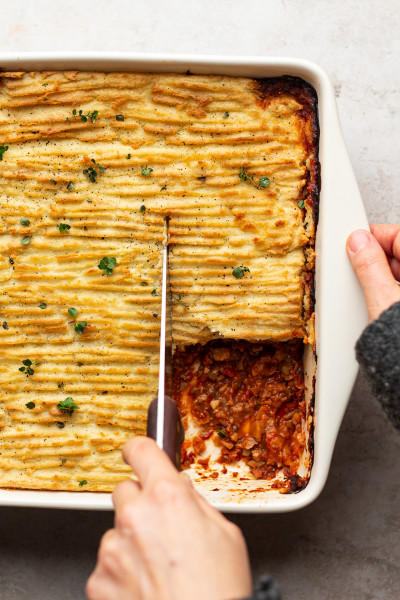
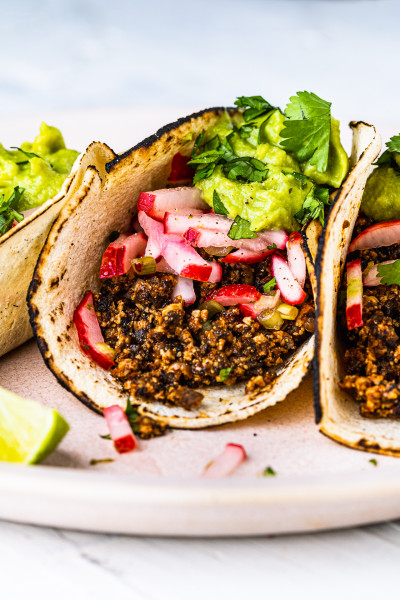
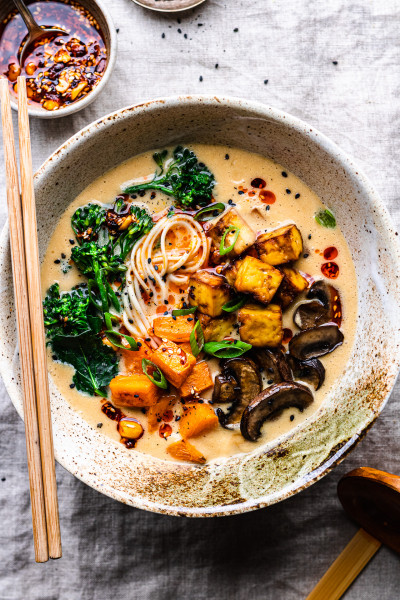
*I didnt have cabbage so I used collards and it wasnt bad but I think the sweetness of the cabbage would have been lovelier....I will definitely make again with the cabbage.
I think you might have misread the recipe. It calls for 120 ml of wine, not vinegar and it goes in step 5. I add a tiny bit of balsamic as well at that stage. Hope you'll enjoy it. Ania
I am delighted that you enjoyed this dish and thank you for letting me know - much appreciated. If cabbages are too expensive, how about using the stuffing to stuff some other, more affordable veggies - for example hollowed out sqaushes, zucchini? x Ania
That's great to hear that you are planning to make them! I hope they will be enjoyed. x Ania
Yes, I am pretty sure that it would work but I don't think you'll need to precook the leaves (or maybe for just a minute). x Ania